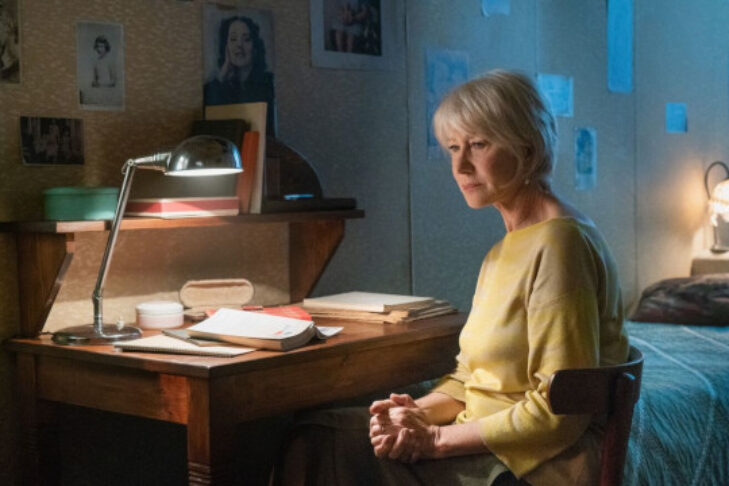In the past six decades, there have been almost two dozen plays and films culled from Anne Frank’s diary. She was the girl hidden away in the annex who arguably authored the world’s most famous diary. Anne’s words unflinchingly and brilliantly revealed her adolescent psyche and then her maturity as she came into her own during the Holocaust.
With so much written and dedicated to her life and death, another film about her might seem superfluous. But “#AnneFrank: Parallel Stories” is a unique addition to Anne’s story. In addition to exploring Anne’s life, the film highlights the lives of Anne’s five contemporaries who survived the Holocaust.
Anne Frank was born in 1929 in Frankfurt, Germany. As Hitler and the Nazis gained a foothold in the country, the Frank family fled to the Netherlands in 1933. By 1940 the Germans occupied the country, trapping the Franks in Amsterdam. In June 1942, on Anne’s 13th birthday, the family hid in the annex of her father’s place of business. They spent two years in the attic before they were likely betrayed by one of Otto Frank’s employees. Anne, her older sister, Margot, and her parents, Edith and Otto, were deported to Auschwitz. Along with her sister and mother, Anne was eventually taken to Bergen-Belsen, where she and Margot died of typhoid in 1945. Anne was 15 years old. Seventy-five percent of Dutch Jewry would die in the Holocaust.
In “#AnneFrank: Parallel Stories,” Oscar winner Helen Mirren movingly reads excerpts of Anne’s diary, which Anne addressed as “Kitty.” Anne’s words are juxtaposed with the social media posts of a fictional teenage girl, #KatrinaKat. Katrina conjures Anne and texts her during visits to the annex at 263 Prinsengracht, the Bergen-Belsen concentration camp and various museums in Europe that display pieces of Anne’s story. Katrina’s messages are 21st-century versions of Anne’s diary entries, strongly establishing a generational connection.
Mirren’s readings also alternate with the eyewitness accounts of five women, roughly Anne’s age, who survived the Holocaust. Andra and Tatiana Bucci from Croatia were 4 and 6 when, along with their 7-year-old cousin Sergio, were deported to Auschwitz. Mistaken for twins, the Bucci sisters were experimented on by Josef Mengele, the “Angel of Death” himself. The girls initially survived because they had heard not to step forward when the guards asked who wanted to see their mothers. Twenty children, including Sergio, volunteered and perished in the gas chambers.
Croatians Sarah Lichtzstejn-Montard and her mother were rounded up in June 1942 in a stadium near the Eiffel Tower. They slipped past the police and spent two years hiding in Paris. However, in May 1944, mother and daughter were arrested and sent to Auschwitz and then to Bergen-Belsen. Lichtzstejn-Montard speaks directly to the camera as she says: “My number is 7142. Once in my grave, the worms will eat it off me, but for the time being this is my mark, a mark of life, and I look after it.” Her grandchildren, she adds, are her “revenge” against the Nazis.
Arianna Szörényi was also from Croatia. Someone who worked with her father turned in her family. She was 11 years old when she was sent on a death march in the winter from Auschwitz to yet another concentration camp. At Auschwitz, she was one of the many victims of Irma Grese, a brutal SS guard who was sentenced to death after the war for her murderous crimes. Szörényi recalls that she was among those who loaded corpses on wagons headed for the crematoria.
In 2014, at the age of 80, Szörényi broke her silence about her wartime experiences and wrote a book entitled “A Girl in Auschwitz.” After reading the account, Szörényi’s grandson, Lorenzo, tattooed her concentration camp number—89219—on his arm.
Like Anne, Helga Weiss was born in 1929. She was initially deported to Theresienstadt, also known as the Terezin concentration camp, in German-occupied Czechoslovakia. Terezin was an exception among the camps for its rich cultural life. In Nazi propaganda, the camp was noted for its educated inmates, ongoing art classes and primary-school lessons. In reality, it was a way station for Czech, Dutch, Danish and other Jews who were transported to Auschwitz. Weiss managed to survive Terezin’s dreadful conditions as a shepherd and now has a vast collection of sheep dolls, many of them sent to her from all over the world.
Throughout the film, Mirren reads excerpts of Anne’s diary in a faithful recreation of Anne’s room in the secret annex. As Anne declared: “I want the diary to be my friend.” Having the diary to write in lifted Anne’s spirits. She recorded her musings on everything from her family and others in the annex to the ongoing Nazi deportations that she learned about from clandestine BBC broadcasts of the Dutch government in exile, as well as her first kiss with Peter Van Pels, whom she calls Peter Van Daan in her diary.
Anne was also aware that keeping a diary made her a crucial, front-row witness to the war. In those same radio broadcasts, the Dutch government encouraged people trapped in occupied Holland to keep a written record of their stories for publication after the war. Very much the writer, Anne wanted her work to be included.
“#AnneFrank: Parallel Stories” admirably showcases Anne’s optimism, her teenage rebellion, her budding sexuality and her literary gifts. Anne was forced to grow up quickly. But as the film conveys, she was, at heart, a teenager with hopes and dreams that continue to resonate with subsequent generations.
“#AnneFrank: Parallel Stories” is streaming on Netflix. The Lappin Foundation will be discussing the film on Thursday, Aug. 20, at 7:30 p.m. Learn more here.



